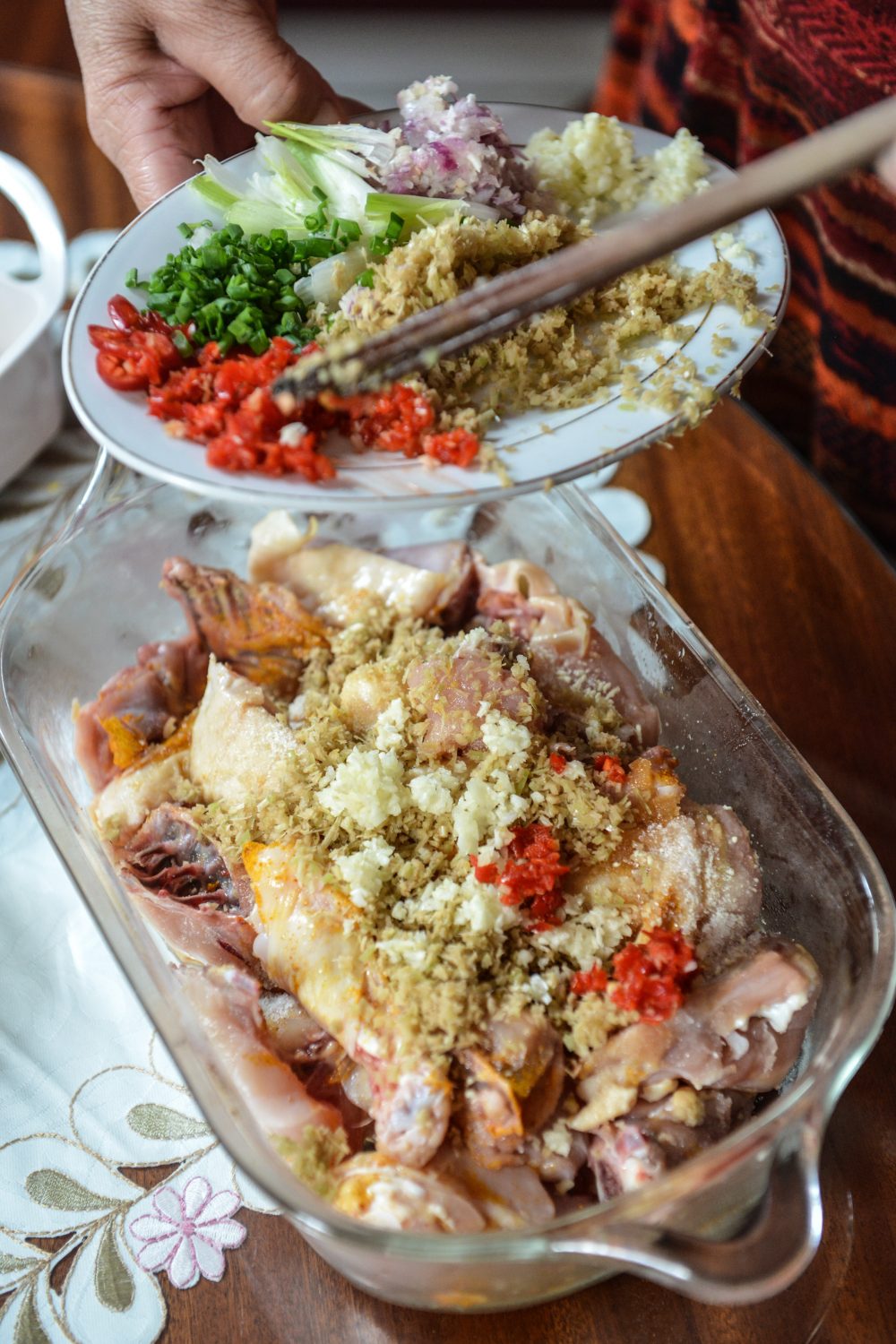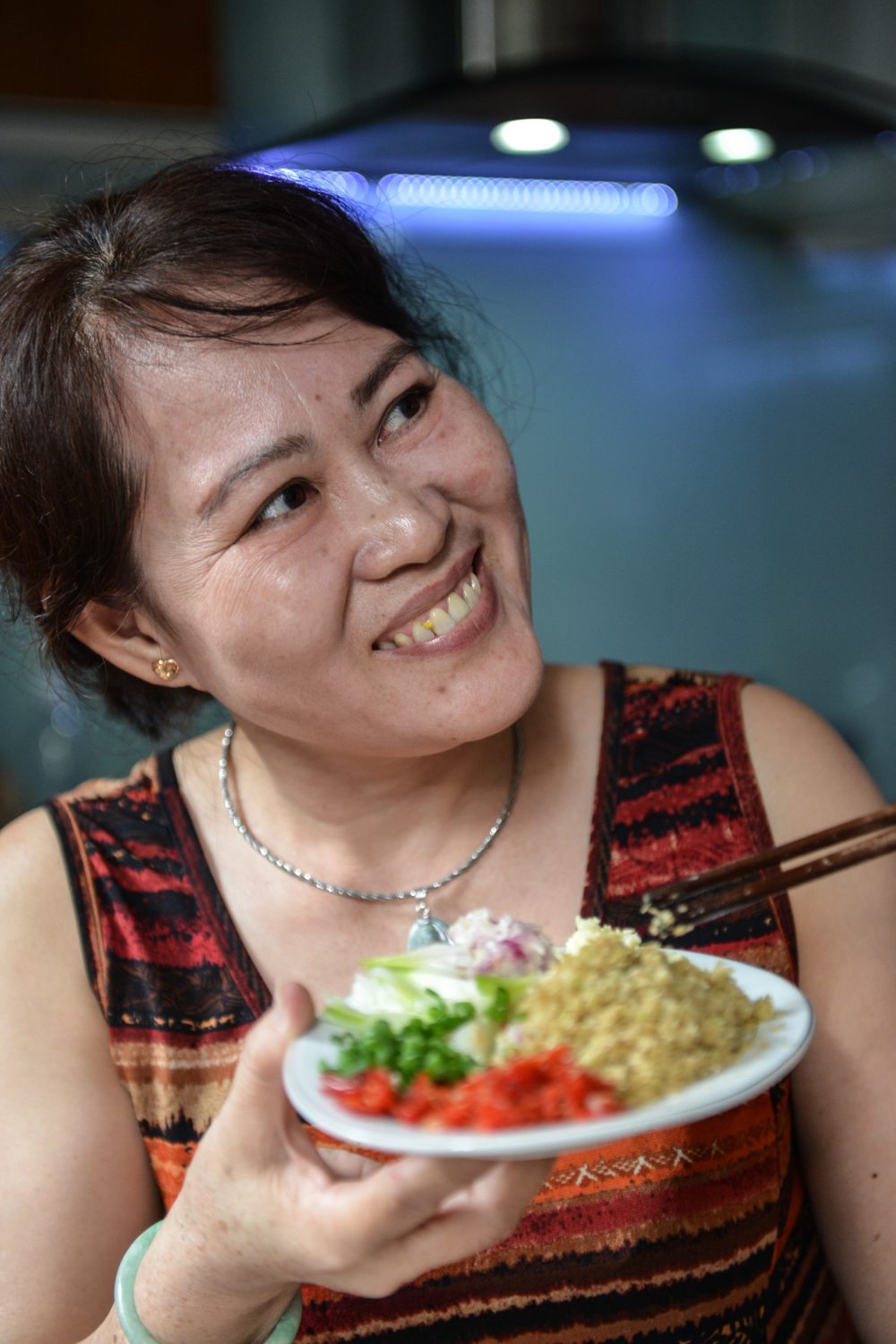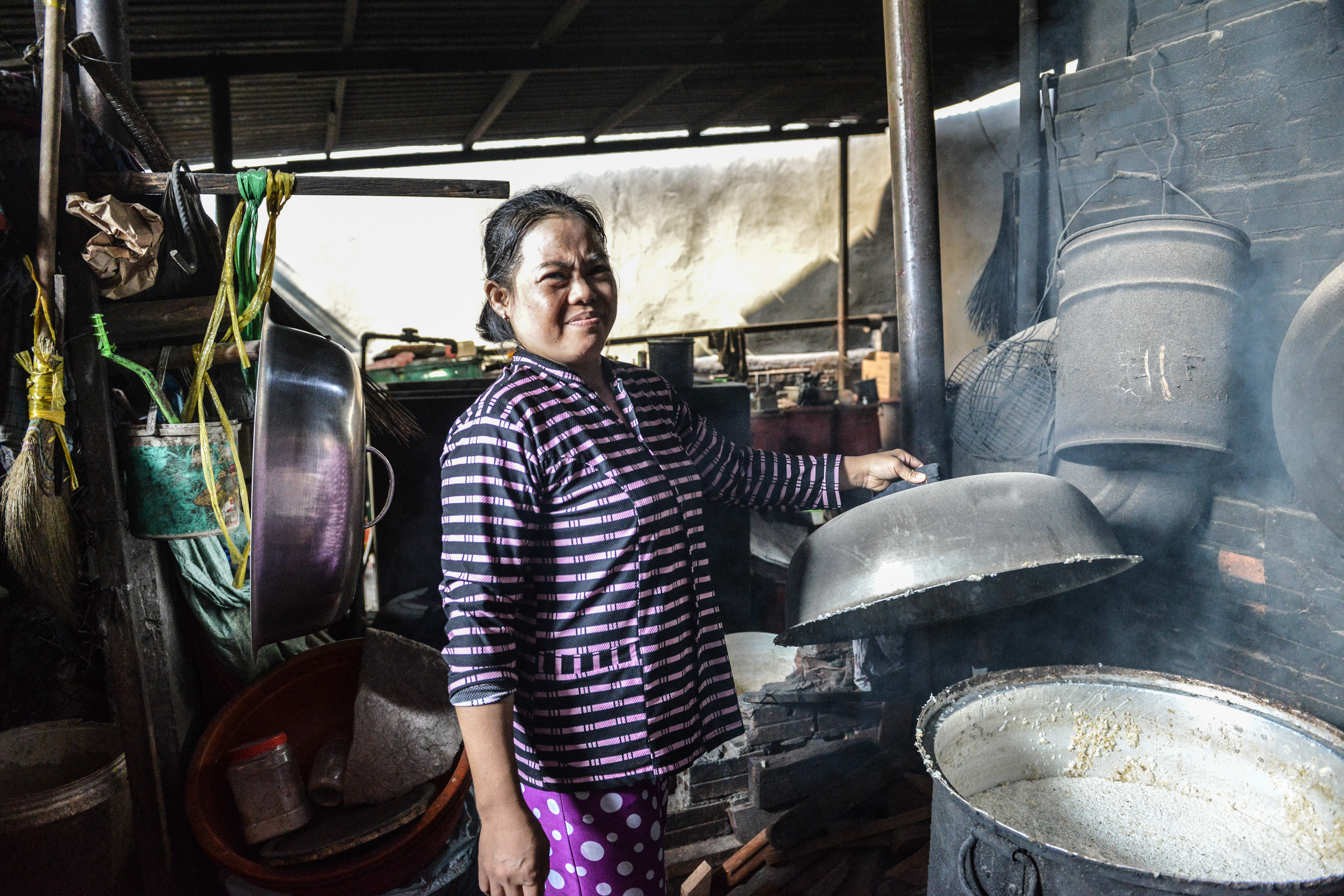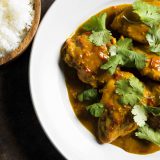Smoke and yeast, an alluring cocktail that wafts from the shadowed backside of the home, a cool three-walled stone reprieve from the scorching sun that bakes the speeding highway a few feet away. Laundry flaps, mingling with tarps strung from a corrugated roof that allows shards of sunlight to pierce, speckling the dozens of faded red barrels stacked inside.
I’d followed the Đường Nguyễn Huệ, an uneventful highway that links bustling Ho Chi Minh City to the verdant Mekong Delta in the southwest corner of Vietnam. After days eating my way across the city once—and often still—known as Saigon, I’d needed an escape from the overwhelming vibrato of scooters that blankets every moment.
The rumbling ride delivered a peace of sorts, as well as the lush green one expects from the flood-prone province’s neatly manicured rice paddies, many of them dotted with brightly colored graves, part of a tradition of keeping loved ones close after death. Now and again, waving grassy stretches give way to gray clusters of homes and businesses, many with fronts spilling open suspiciously close to traffic. My translator suggested we visit one such.

“A little bit sweet, salty, lemony and curry-like.” That’s món lẩu gà hầm sả, a tender chicken braise rich with turmeric, garlic, lemon grass and chilies.
That aroma—a blend of smoldering rice husks and fermentation—is the only sign of what’s inside the low-slung building. For the locals, it’s a telltale of rượu đế, the region’s potent rice wine brewed by many for profit and pleasure. A middle-aged couple shuffles about, shooing cats as they wait for customers, though they sell most of their product in the city.
A large cauldron of sticky rice and water simmers over a stone fire pit. It will do so for three days, turning porridge-like and dense. For three days more it will sit, natural yeasts having their way in an ancient alchemy. Then back over the heat, this time capped with an ingenious series of pipes and plumbing that channels the intoxicating vapors along cooling water lines, condensing it back into a liquid that gathers in plastic jugs and tankards below.
The couple learned their trade from their parents, who learned it from their parents, all of whom distilled in the same spot. Today, they produce some 80 liters a day, selling it for 30,000 dong a liter, or about $1. I’m offered a far-too-tall glass of the clear, slightly viscous liquid. Spicy, peppery, vaguely sweet and warming. And so very strong. No... So VERY strong.
“Too strong!” the woman tells me, chuckling when I ask how often she drinks it. Nor does her husband.
It’s a sentiment I’m unaccustomed to hear- ing in Vietnam, where the cuisine is so defined by delicious riots of flavors that both harmonize and contrast. Fish sauce. Lime juice. Ginger. Shrimp paste. Spicy chilies. Tangles of mint and cilantro. But the family connection? That passing of tastes and traditions from one generation to the next? That was a theme I’d encounter over and again.
Back in Ho Chi Minh City, Phạm Thị Thanh Tâm invited me into her home for a simple chicken dish that—I soon would learn— reflected both those lessons. The bold, even brash pops of flavor I’d come to recognize as the delicious undercurrent of Vietnamese cooking. And the respect for lineage, the movement of foodways from one generation to another.
Phạm’s home is in a quiet corner of Quận 8, or District 8, and it follows a familiar model: front wall that opens to the street, pleasantly blurring the lines between living room, scooter parking, pedestrians and neighbors. The result is welcoming, airy and inclusive, yet still private. Her kitchen is in the back, and when we arrive, mounds of red chilies, lemon grass and garlic compete for table space with bottles of fish sauce and bright bowls of turmeric. Once again, you smell it before you see it.

Ample chilies and lemon grass create a bold, balanced dish.
Phạm is making món lẩu gà hầm sả, or braised lemon grass chicken, one of a sprawling family of recipes in which the meat is quickly cooked in scant liquid and a handful of high-flavor ingredients. It’s a dish she makes often for her husband and sons, and one she learned as so many others. “The way I learned was to help my mother, my neighbors and my friends.”
She’d butchered the chicken before we arrived, and now tosses its parts with a pungent blend of turmeric, sugar, fish sauce—the nation’s de facto salty-savory seasoning—copious garlic, ample finely minced red chilies called “water buffalo horns,” 1⁄4 cup of finely minced fresh lemon grass and a generous sprinkling of MSG, a common flavor enhancer.
She lets it sit for 15 minutes, then heats neutral oil in a deep pot. Another 1⁄4 cup of minced lemon grass is added to the hot oil, and suddenly the kitchen is perfumed, vibrant with herbal-citrus aromas. Working quickly with chopsticks, she scatters the lemon grass evenly in the pot, then adds garlic and more chilies. Chili heat and garlic mingle in the air.
Next goes a splash of water, no more than 1⁄2 cup, and the chicken and everything it had been tossed with, bringing the lemon grass in this dish to a full and delicious 1⁄2 cup. “It’s a great combination,” Phạm says of the flavorings. “A little bit sweet, salty, lemony and curry-like.”
In about 30 minutes, the chicken is cooked and coated. The bare liquid has reduced— enriched with turmeric, garlic, lemon grass and chilies—and now sauces the chicken thickly. The combination is both rich and bright, savory and just a hint sweet, flavor combinations that play on repeat in Vietnamese cooking, which so often is defined by contrasts.
For our version, we stuck closely to Phạm’s recipe, with two exceptions. The lemon grass in Vietnam is far fresher than most of what is available in the U.S. Though we wanted to mince it and add it directly to the dish as she did, we found our lemon grass unpleasantly fibrous. Instead, we bruised the stalks, simmered them in the sauce, then discarded them before serving. We also replaced the MSG that some Americans are reluctant to use with equally umami-rich soy sauce. The result, we hope, continues the tradition of boldly seasoned recipes passing from one to another.










